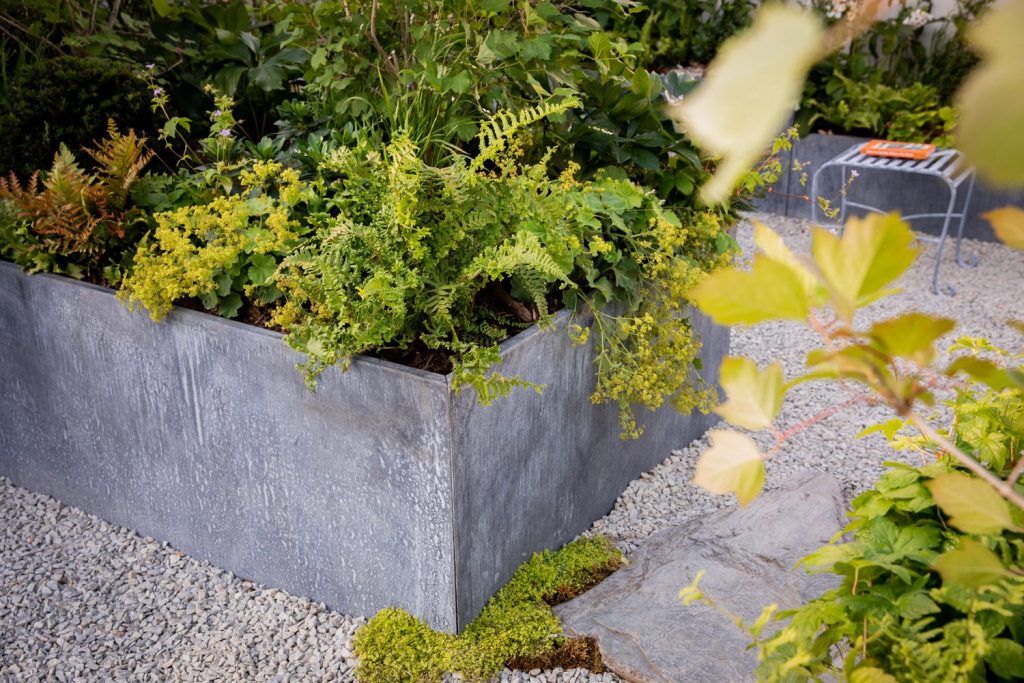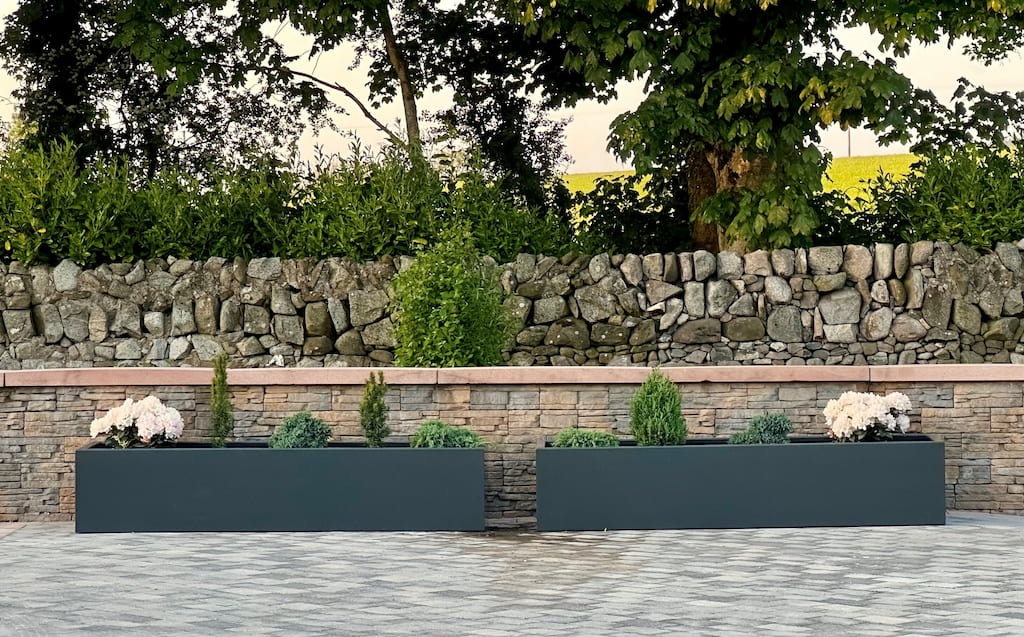What is the difference between a plant container and a raised bed?
What is the difference between a plant container and a raised bed?
Raised beds and pots/planters come in a wide array of shapes and sizes and materials. But when is a raised bed a raised bed and not a pot? And what are the pros and cons of each? In this guide we will take a look at both of those questions, which will hopefully prove helpful if you are considering which to get for your garden, patio, or balcony.

Contents
Pots v Raised beds
The most obvious difference between a raised bed and a pot is that the former tends not to have a base, while the latter does. That said, it is quite possible to have a bottomless planter that could be called a pot by some people (but for the sake of this article any mention of a pot will be referring to something with a base).
The other chief issue is size: pots tend to be smaller and portable, whereas raised beds are not portable (not when full of plants anyway!) and are usually (not always) larger, although probably not as tall, as pots.
Materials are another factor that is often important. Pots are frequently made of terracotta – whereas have you ever seen a terracotta raised bed? Of course, some materials work well for both and metal, particularly types of steel, is one of those. Metal garden beds are great for growing your own food, while metal pots make a statement on your patio.
Wood, meanwhile, tends to be used more in raised beds, while concrete and plastic are more likely to be used for pots. Metal, though, can be seen as better value as it is likely to last much longer than some of the other materials. Wood is likely to rot, especially if it’s not treated, while terracotta pots often crack in frosts, and plastic often goes brittle and breaks up over time.
Metal could also be seen as the more environmentally conscious option as, although quite energy-intensive to produce, it will last longer. Corten steel also won’t need treating with any chemicals to preserve it. There is also increasing awareness of the environmental impacts of plastic.
Another area where they traditionally differ somewhat is what people choose to plant in them. Raised beds are very popular for growing vegetables, while pots are great for displays of spring bulbs and summer bedding. Of course, this is far from a hard and fast rule; particularly as grow-your-own becomes more popular by utilising pots in new ways.
Advantages of raised beds and pots
Both raised beds and pots raise plants off the ground and allow you to customise the type of soil or compost you have to grow those plants in. This can be important if you have poor soil, soil that is full of tree roots or stones, or the wrong type of soil for a particular plant. For example, if you are growing a blueberry bush you may wish to grow it in a pot of ericaceous compost as it likes acidic soil, which you may not have in your garden.
Another advantage is that they often look better. Whether that be an ornamental steel planter in a contemporary garden, a terracotta pot on a patio, or a wooden or galvanised steel raised bed in the veg garden they somehow look much more pleasing to the eye than just soil. Of course, you can spruce up your borders with edging, but pots and raised beds still look classy.
Advantages of pots
Protection from pests and diseases
Raising plants off the ground makes them less likely to be attacked by certain pests. This obviously makes no difference for pests that fly, but slug protection for hostas, for example, is easier to achieve in pots. Young plants can also benefit from being grown in pots and moved under cover to give them protection when they are just starting out in life. Putting feet on pots and raising them off the ground altogether can also aid drainage.
Change things up
Because smaller pots are portable, they allow you to always have things looking their best on your patio or in the key parts of your garden. You can have your spring bulbs pot on the patio when they are in full bloom, but move them to a quieter part of the garden when the flowers have faded.
A great tip for an ornamental pot is to have a cheaper plastic one inside it. Then, once the plants in that have past their best, swap it for another cheap plastic pot containing flowers for your new display. This is brilliant if you have invested in a beautiful metal garden planter and want to maximise the benefit you get from it.
Great for balconies
Raised beds are probably too big and too heavy for balconies. Some larger pots may be too, especially when they are full of wet compost. However, a small pot or two is unlikely to be too heavy and will allow you to have some green life and flowers in even the smallest space.
Growing tender plants
It is pretty much impossible to grow plants like citrus outside all year round in the UK so having them in a pot allows you to bring them under cover during winter but still enjoy them on the patio during the summer. This is also true for some bedding favourites like pelargoniums, tender fuchsias, and cannas, which will have to be lifted if grown in the garden.
Restrict plant roots
Some plants, like figs and agapanthus, are sometimes said to grow best with a restricted root run. Therefore, a largish container works well. You may also want to restrict the size of a shrub or small tree in a container and can do some root-pruning to help achieve this.

Advantages of raised beds and bottomless planters
A bit cheaper
Because there is no bottom, and therefore less material needed to make them, raised beds are normally cheaper than pots. This means that they can be larger without costing so much money. A pot that is too large loses many of its advantages over raised beds (such as portability) anyway!
Allow you to grow bigger plants
There’s no getting away from it: some plants are just too big to grow in all but the largest pots. Because raised beds have no base, they allow the roots of plants to go as deep as they like.
Less maintenance
Because roots can go deeper, this means that plants in raised beds will generally require less work than those in pots. They will probably need less watering and less feeding, as well as not needing repotting; instead benefitting from an annual mulch.
Allow you to grow healthier plants?
The more we learn about soil, the more amazing it is revealed to be. Worms and other invertebrates help to improve its structure, while soil bacteria often have a beneficial relationship with plants that helps them to access more nutrients and to grow stronger. If these bacteria and bugs can more easily get to the roots of your plants because your container doesn’t have a base, then surely they will grow better?
To sum up
Overall, it comes down to what suits your own circumstances the best. Metal planters and raised beds look stylish, can allow you to create a better display, and grow a wider range of plants. Pots are portable and can be switched around according to the seasons, while bottomless planters and raised beds are that bit more connected to the ground and provide a sort of halfway house between pots and the growing in the soil.
